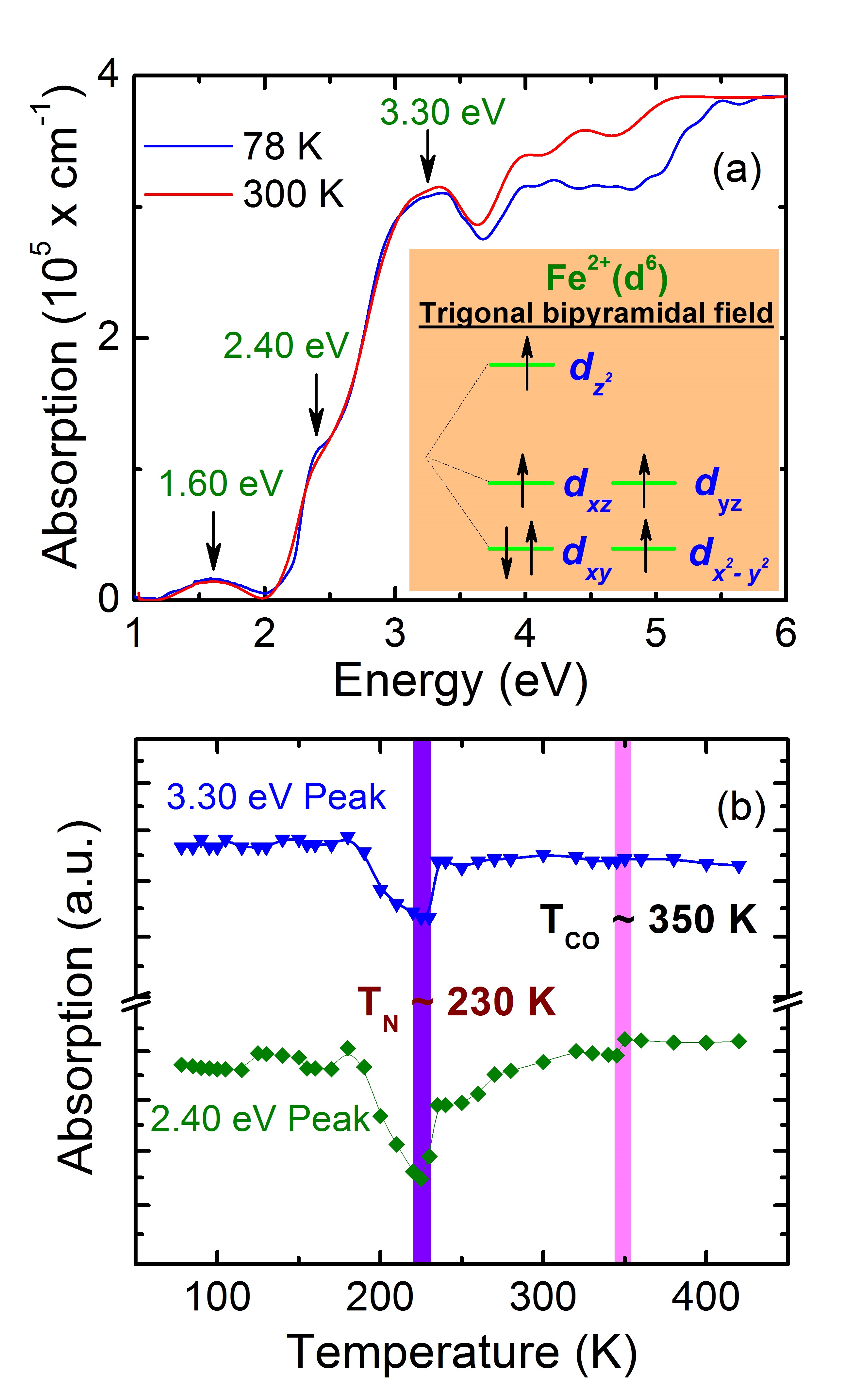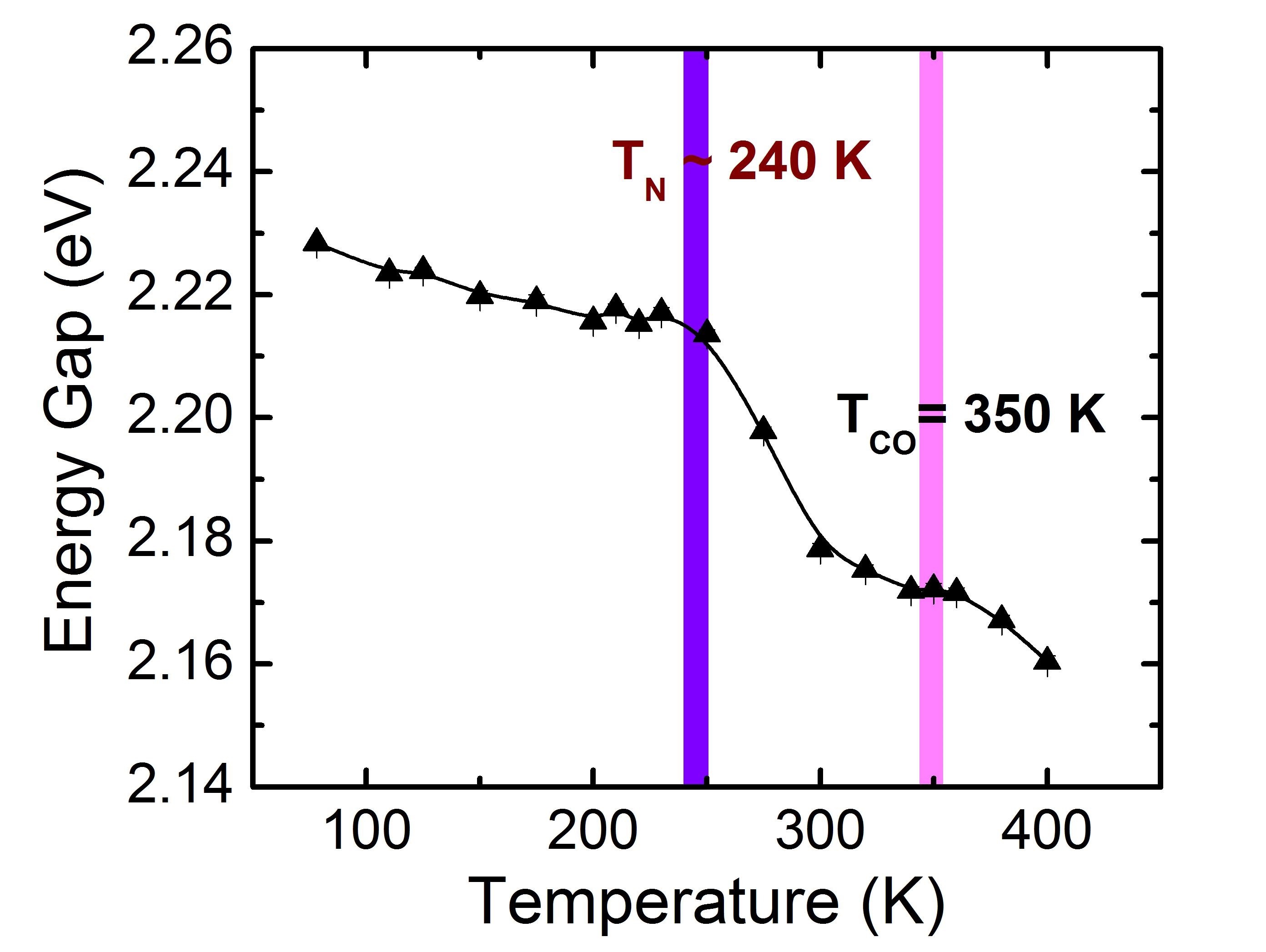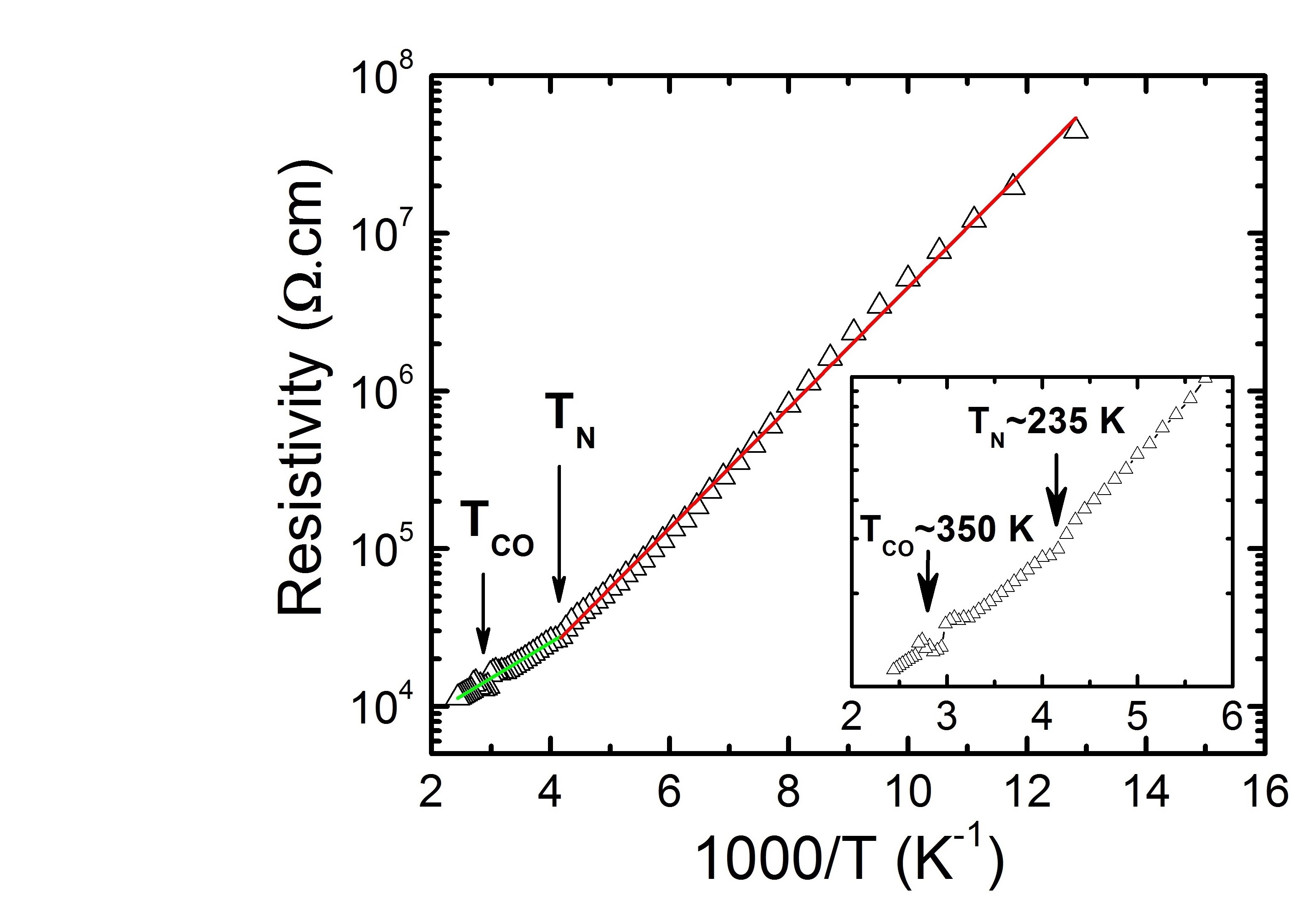Spin-charge-orbital coupling in multiferroic LuFe2O4 thin films
LuFe2O4 (LFO) Fe ions
have mixed valence states with an equal number of Fe2+
and Fe3+ ions in the hexagonal lattice. Such
spin and charge frustrations in the system lead to its
multiferroic property. Further, LFO is unique because
its ferroelectricity is induced by the Fe2+-Fe3+
charge ordering mechanism, not by the spin structures,
and the magnetism is induced by the spin ordering of the
Fe2+ and Fe3+ ions, thus leading
to a direct magnetoelectric coupling.

(a) Absorption spectra of the LFO film on sapphire
at 78 and 300 K, extracted from the transmittance data.
The arrows indicate the observed electronic transitions:
two spin-allowed (Fe2+) dxy to
(dxz, dyz) and dxy
to dz2 on-site transitions
at 1.60 and 2.40 eV and the O 2p to Fe 3d charge-transfer
transition at 3.30 eV. The inset shows the Fe2+
(d6) crystal-field splitting scheme.
(b) The absorption peaks at 2.40 eV (Fe2+
d to d on-site) and 3.30 eV (O 2p to Fe 3d charge transfer)
transitions as a function of temperature. The decrease
in the oscillator strengths of the two absorption peaks
at the magnetic transition temperature provides direct
evidence of the spin-charge coupling effect in the LFO
thin film. The shaded vertical lines designate TN
and TCO.
Temperature dependence of the energy band gap of the
LFO thin film, indicating the two transitions, designated
by the two shaded vertical lines: a 3D CO transition
at 350K and a ferrimagnetic transition at 240 K, respectively.
Resistivity of the LFO thin film on sapphire as a function
of temperature. The inset highlights the close-up view
of the discontinuity around the two transition temperatures,
as indicated by the arrows.


Conculsion: The absorption
spectra of the LFO thin film, deposited on (001) sapphire
and (111) YSZ by electron beam deposition, show Fe2+
d to d on-site transitions at 1.60 and 2.40 eV, and O
2p to Fe 3d and O 2p to Lu 6s, and 5d charge-transfer
transitions at 3.30 eV. Based on the optical absorption
data, the LFO thin film has a direct energy band gap of
~2.18 eV at 300 K. The electronic transitions, the energy
band gap, and resistivity demonstrate their sensitivity
to a ferrimagnetic transition at 235K and the CO transition
at 350 K, confirming a strong coupling of spin, charge,
and orbital degrees of freedom in the LFO thin film.
Reference: R. C. Rai et al., Appl.
Phys. Lett. 100, 212904 (2012).
Top


